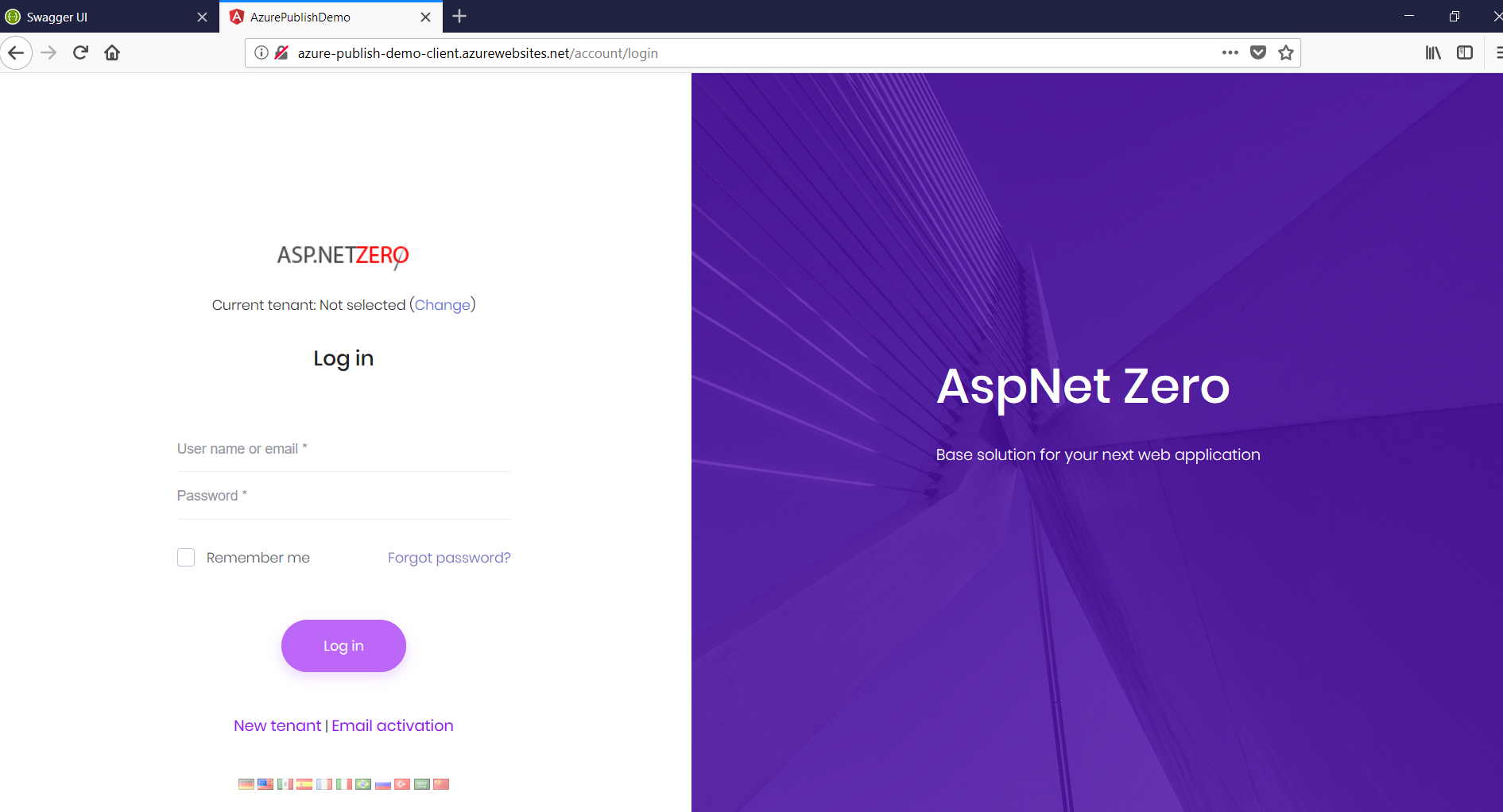Step By Step Publish To Azure
Introduction
Before reading this document, it's suggested to read Getting Started to run the application and explore the user interface. This will help you to have a better understanding of concepts defined here.
Create The Azure Website
It is possible to publish ASP.NET Zero's Angular client app and server side Web.Host API app together or separately. In this document, we will publish both apps separately.
So, go to your Azure Portal and create two websites, one for Web.Host project and other one for Angular application.
Creating an Azure Website for Host
We will be using "Web App + SQL" for Web.Host project but if you already have an SQL Database, you can just create Web App and use the connection string of your Azure SQL Database.
So, select "Web App + SQL" and click create:
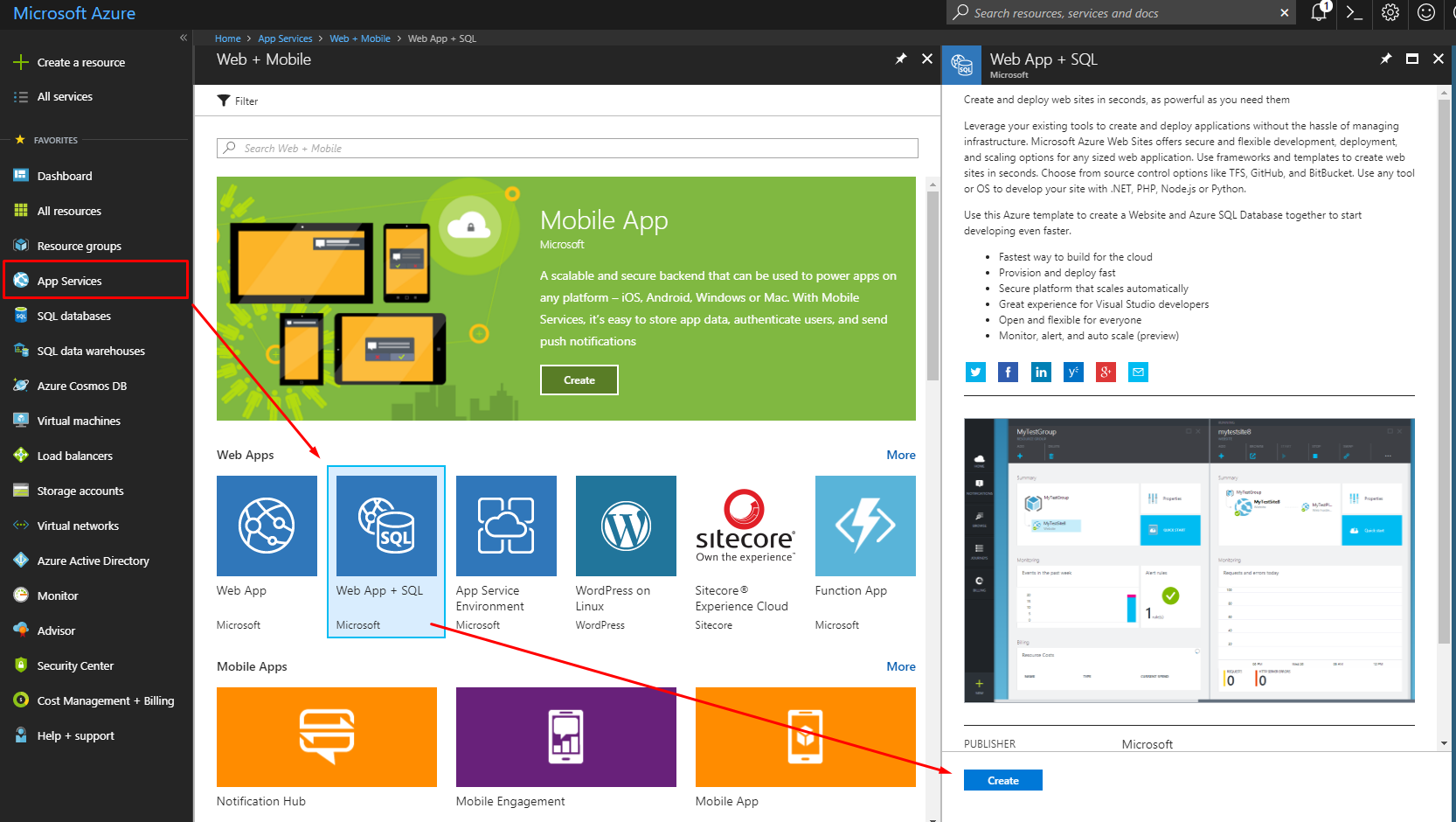
And configure it according to your needs. A sample setting is shown below:
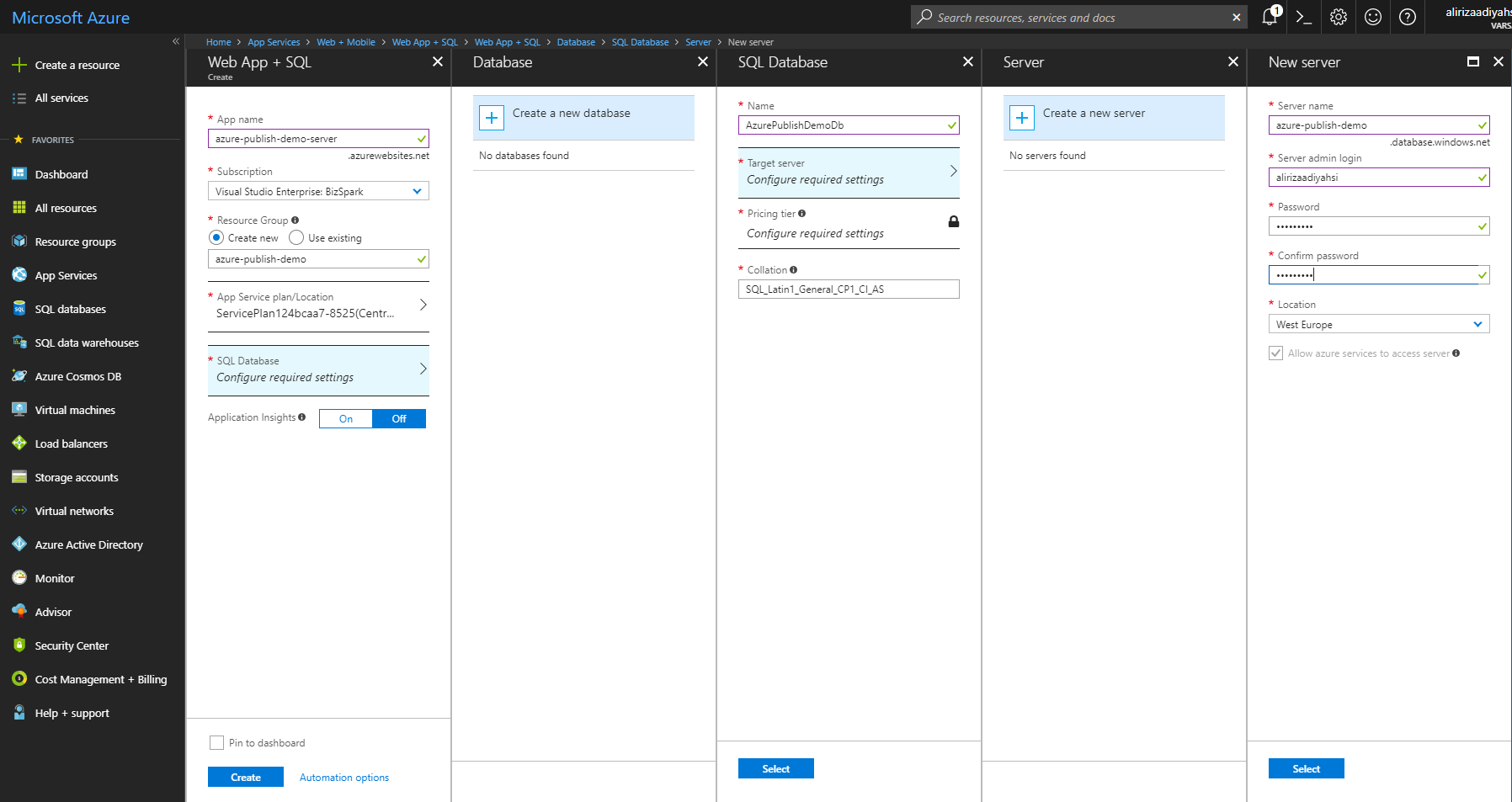
Creating an Azure Website for Angular
Select "Web App" and click create. Since we already created the database for Web.Host application, we don't need it here.
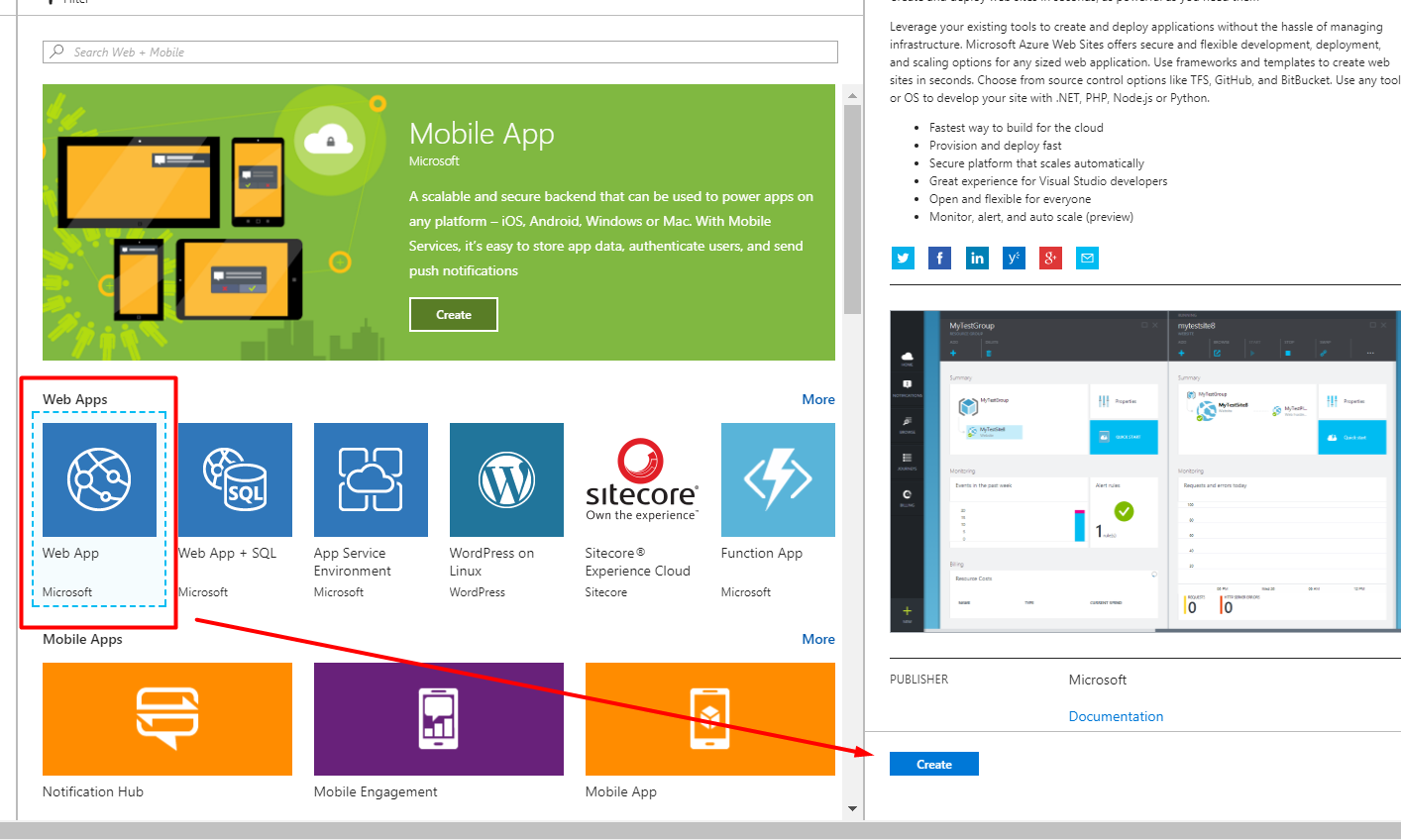
And configure it according to your needs. A sample setting is shown below:
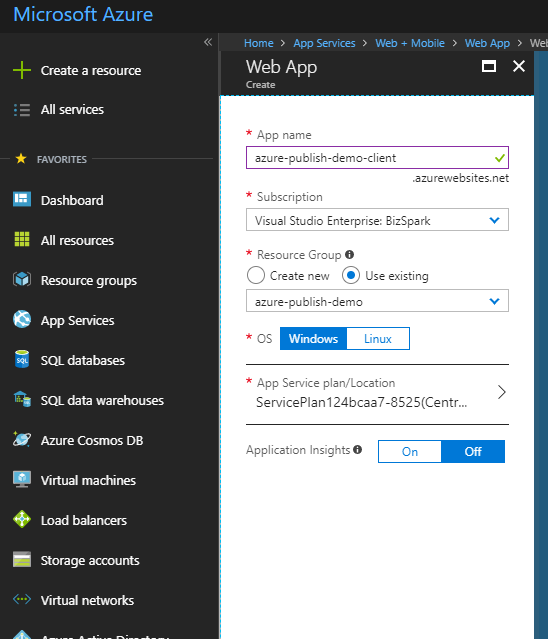
Publish Host Application to The Azure
The details will be explained in the next lines. Here are the quick steps to publish the Host Application to the Azure.
- Run the migrations on the Azure
- Configure the .Web.Host/appsettings.production.json
- Publish the application to Azure
Run Migrations on The Azure
One of the best ways to run migrations on the Azure is running update-database command in the Visual Studio.
In order to do that, your public IP address should have access to the Azure.
Configuring the Firewall for Client Access
The easiest way: Open Management Studio and write the Azure database settings, then click connect. If you are already logged in to the Azure, following info screen will be shown (if you aren't already logged in, a form will be displayed before the following screen to logging in):
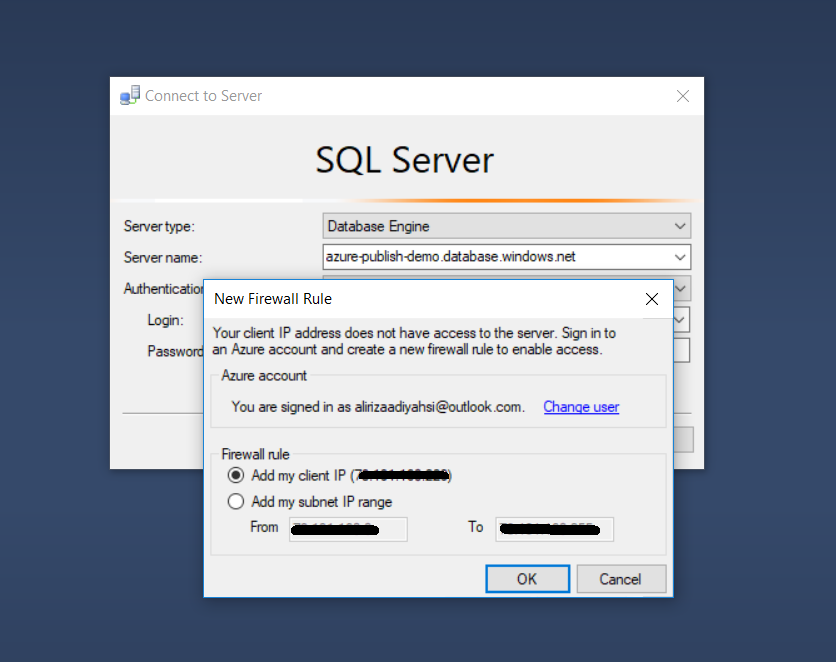
Now your client IP address have access to the Azure. Of course, this operation can also be done via the Azure Portal. Check here to learn how to configure the firewall for client access via Azure Portal.
Apply Migrations
Open appsettings.json in .Web.Host project and change connection settings according to the Azure Database:

Open Package Manager Console in Visual Studio, set .EntityFrameworkCore as the Default Project and run the update-database command as shown below:

Configure the appsettings.production.json
Azure is using appsettings.production.json, so this file should be configured like following:

Publish
Right click the Web.Host project and select "Publish". Select "Microsoft Azure App Service" and check "Select Existing". Click "Create Profile" button.
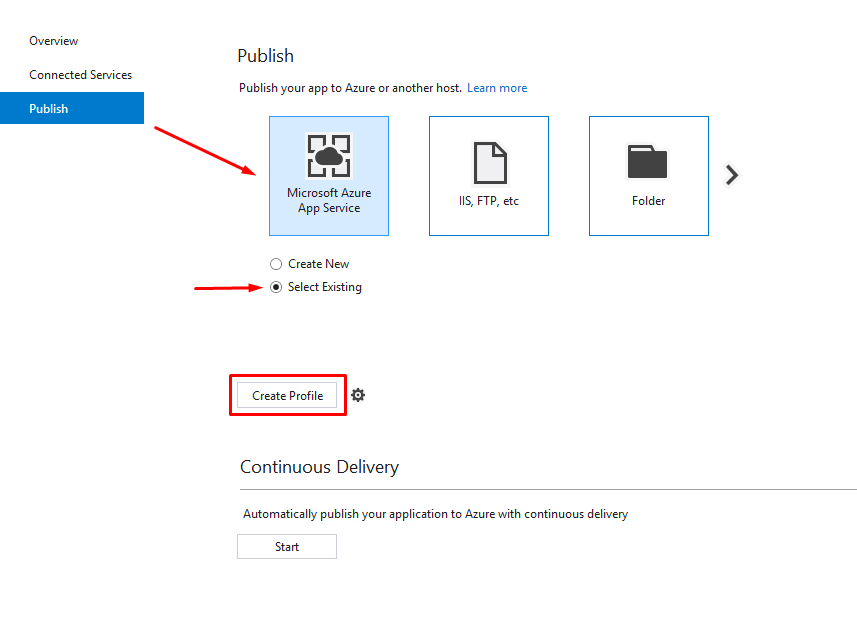
Following screen will be shown:
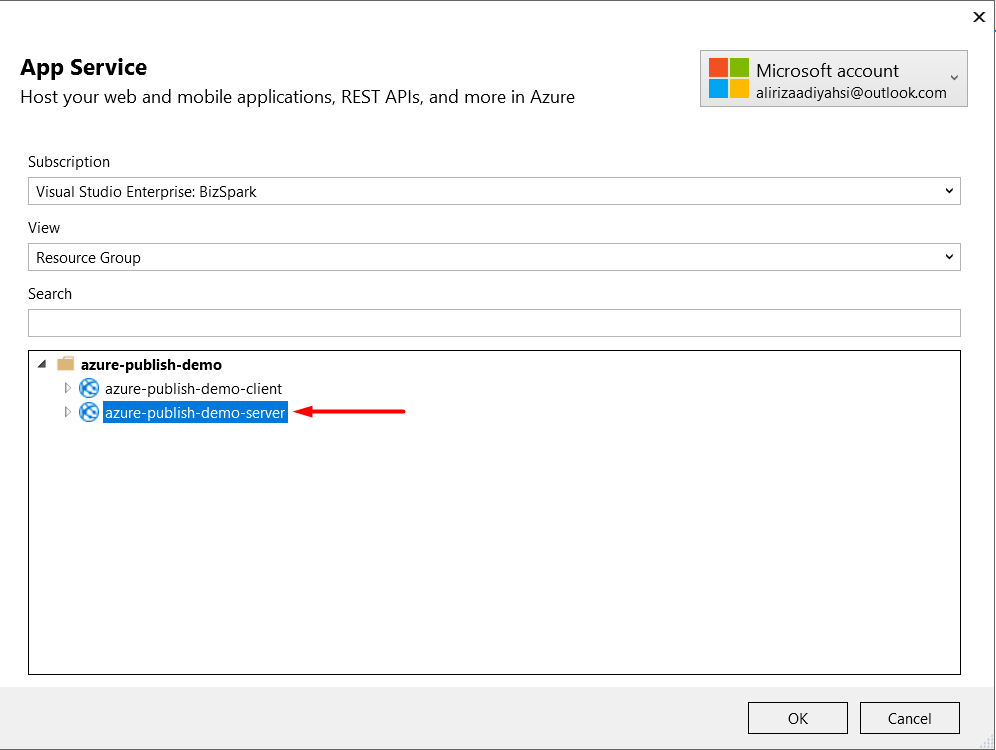
Select "azure-publish-demo-server" and click "OK", then click "Publish" button. Host application is live now:
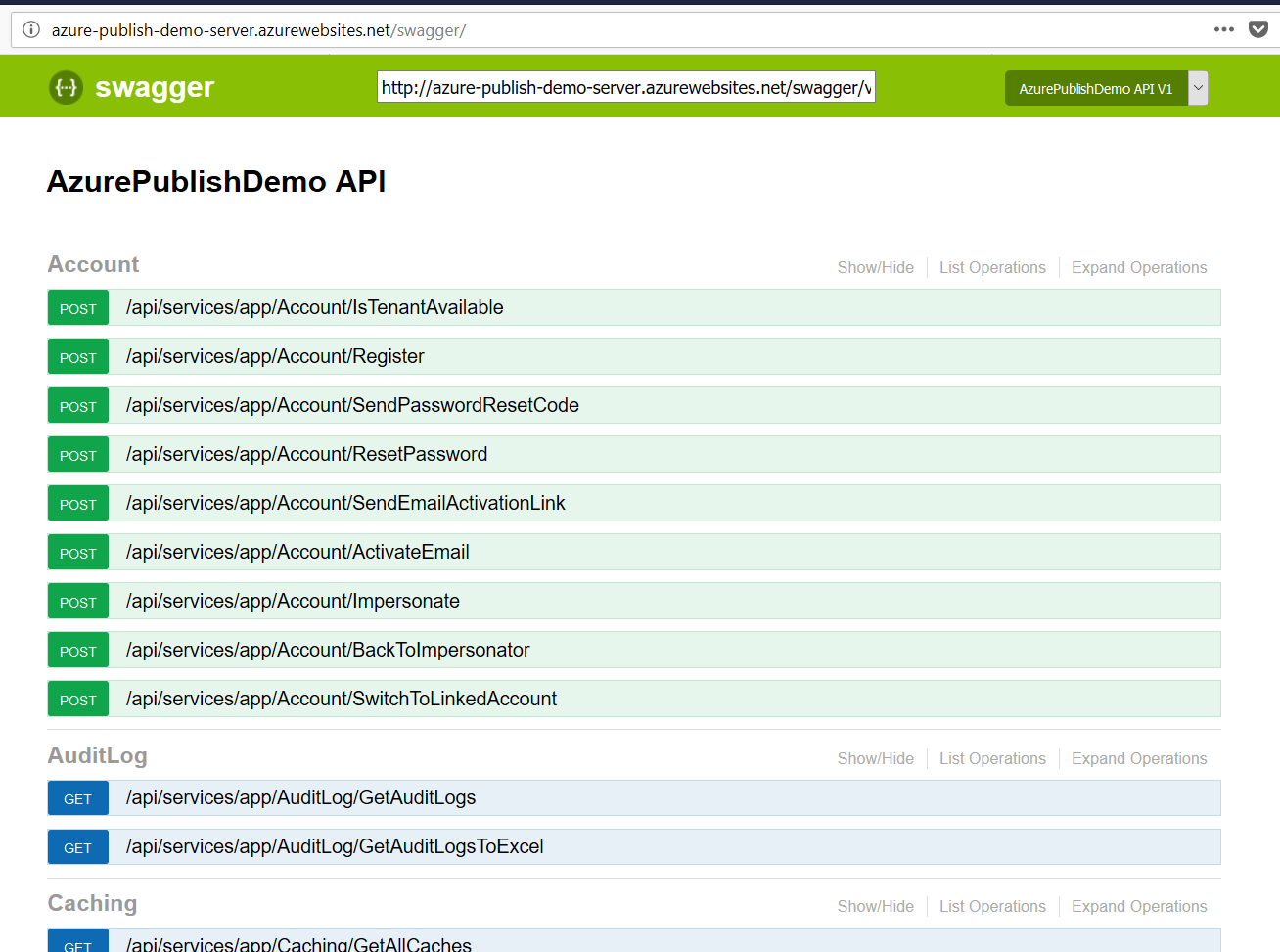
Publish Angular to The Azure
The details will be explained in the next lines. Here are the quick steps to publish the AngularUI to the Azure
- Run the
yarncommand to restore packages - Run the
ng build -prod - Copy the web.config file that is placed in angular folder to dist folder
- Configure the angular/dist/assets/appconfig.json
- Upload required files to the Azure
Prepare The Publish Folder
Run the yarn command to restore packages and run the ng build --prod to create publish folder that named dist.
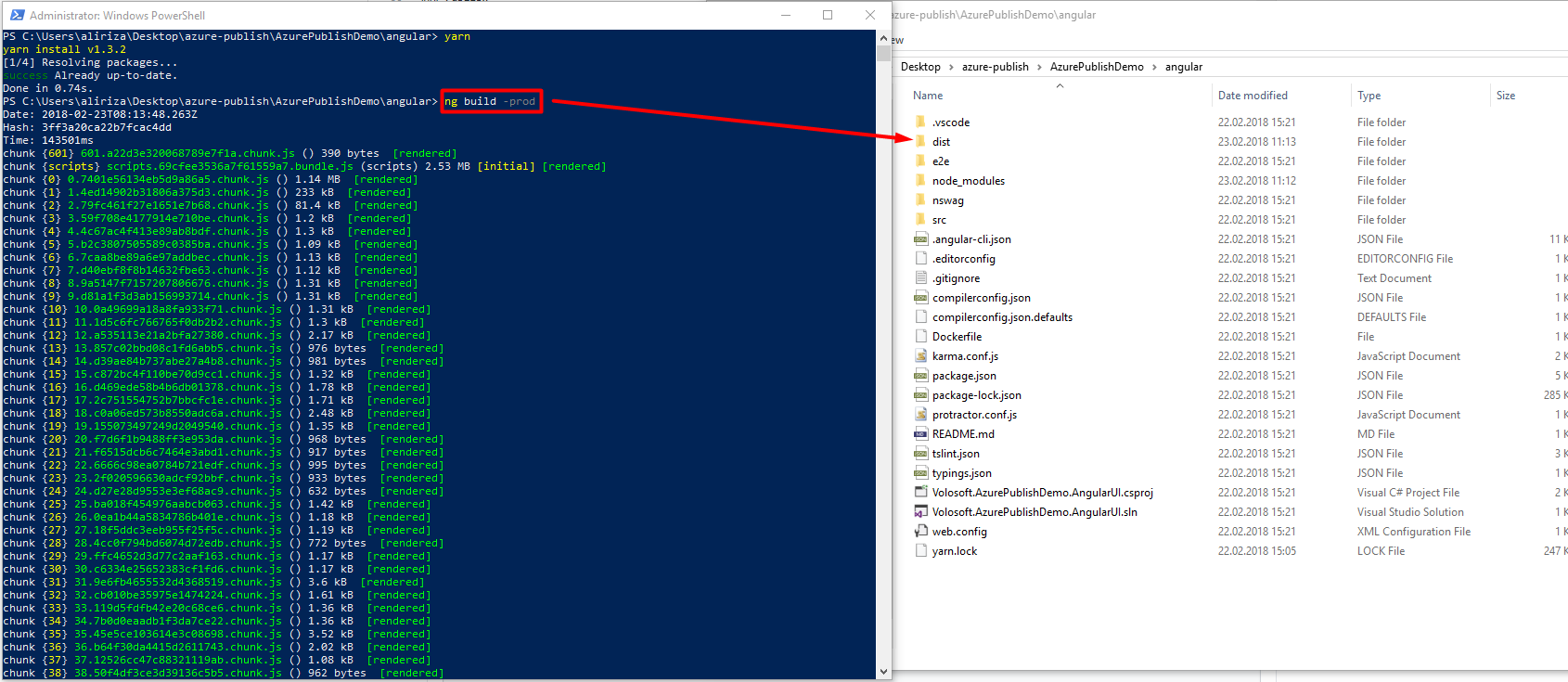
Copy the web.config
Copy the web.config file that is placed in angular folder to angular/dist folder.
Copy the appconfig.json
Configure the angular/dist/assets/appconfig.production.json like following:
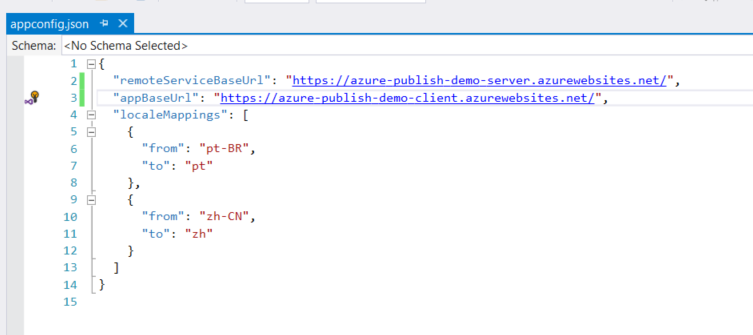
Upload Files to Azure
Files must be uploaded to the Azure via FTP. Transfer files from the dist to the www folder in the Azure. The folder structure should look like:
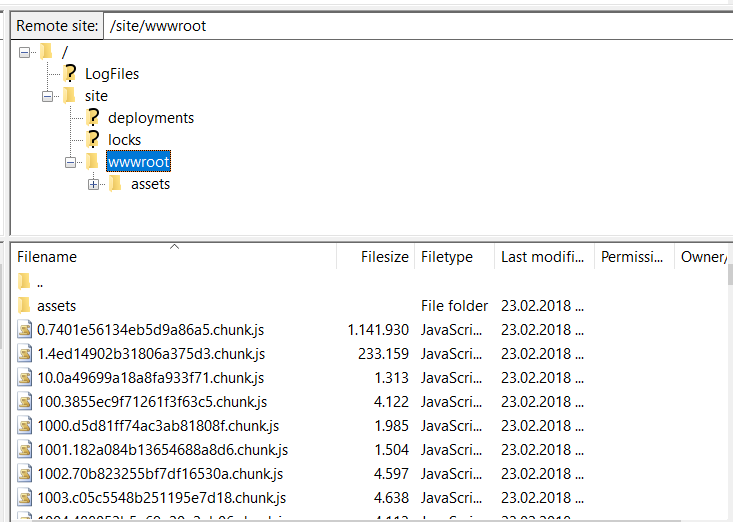
Angular application is live now. Browse the http://azure-publish-demo-client.azurewebsites.net and see it works.
